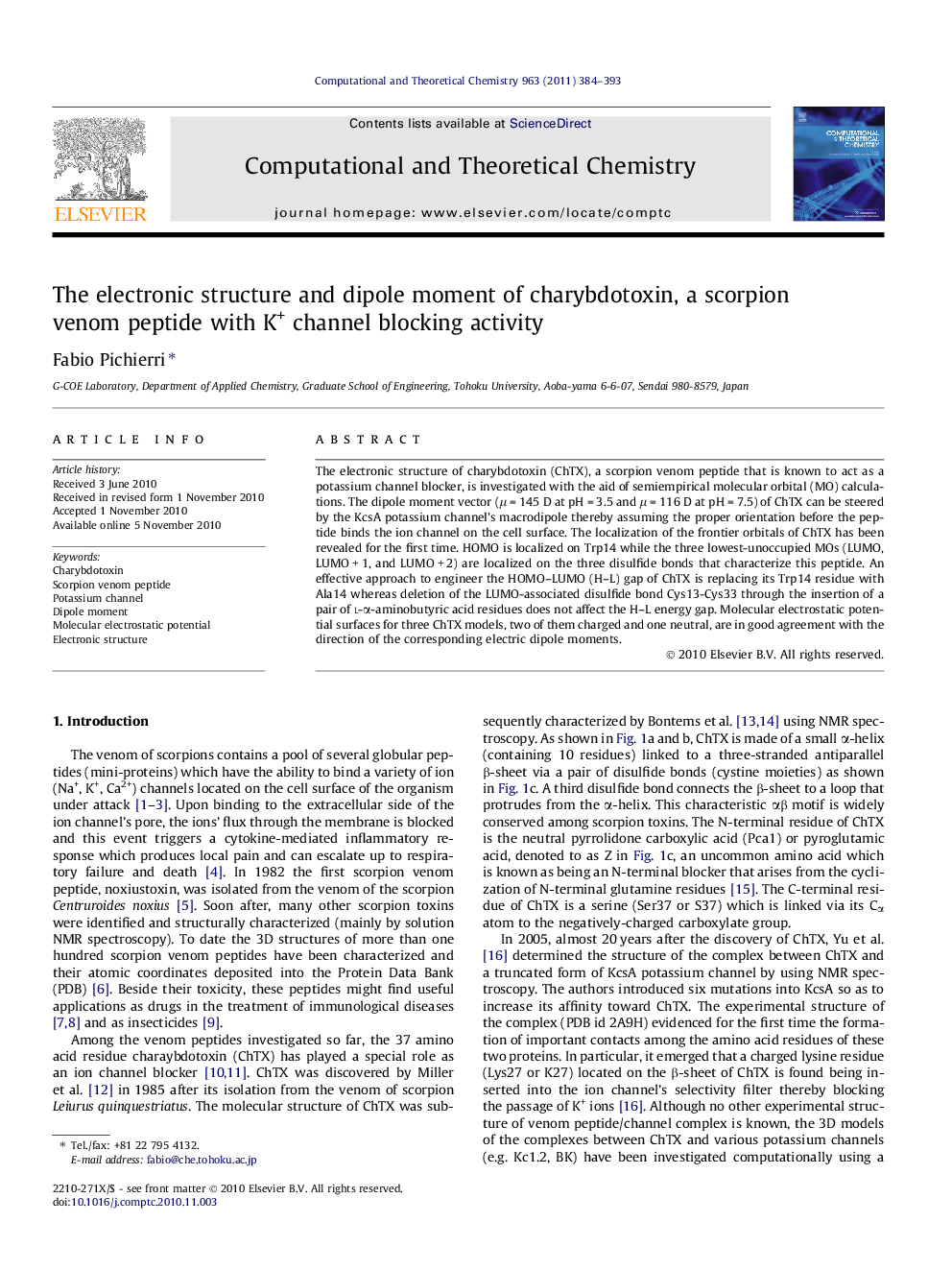| Article ID | Journal | Published Year | Pages | File Type |
|---|---|---|---|---|
| 5395390 | Computational and Theoretical Chemistry | 2011 | 10 Pages |
Abstract
The electronic structure of charybdotoxin (ChTX), a scorpion venom peptide that is known to act as a potassium channel blocker, is investigated with the aid of semiempirical molecular orbital (MO) calculations. The dipole moment vector (μ = 145 D at pH = 3.5 and μ = 116 D at pH = 7.5) of ChTX can be steered by the KcsA potassium channel's macrodipole thereby assuming the proper orientation before the peptide binds the ion channel on the cell surface. The localization of the frontier orbitals of ChTX has been revealed for the first time. HOMO is localized on Trp14 while the three lowest-unoccupied MOs (LUMO, LUMO + 1, and LUMO + 2) are localized on the three disulfide bonds that characterize this peptide. An effective approach to engineer the HOMO-LUMO (H-L) gap of ChTX is replacing its Trp14 residue with Ala14 whereas deletion of the LUMO-associated disulfide bond Cys13-Cys33 through the insertion of a pair of l-α-aminobutyric acid residues does not affect the H-L energy gap. Molecular electrostatic potential surfaces for three ChTX models, two of them charged and one neutral, are in good agreement with the direction of the corresponding electric dipole moments.
Keywords
Related Topics
Physical Sciences and Engineering
Chemistry
Physical and Theoretical Chemistry
Authors
Fabio Pichierri,
